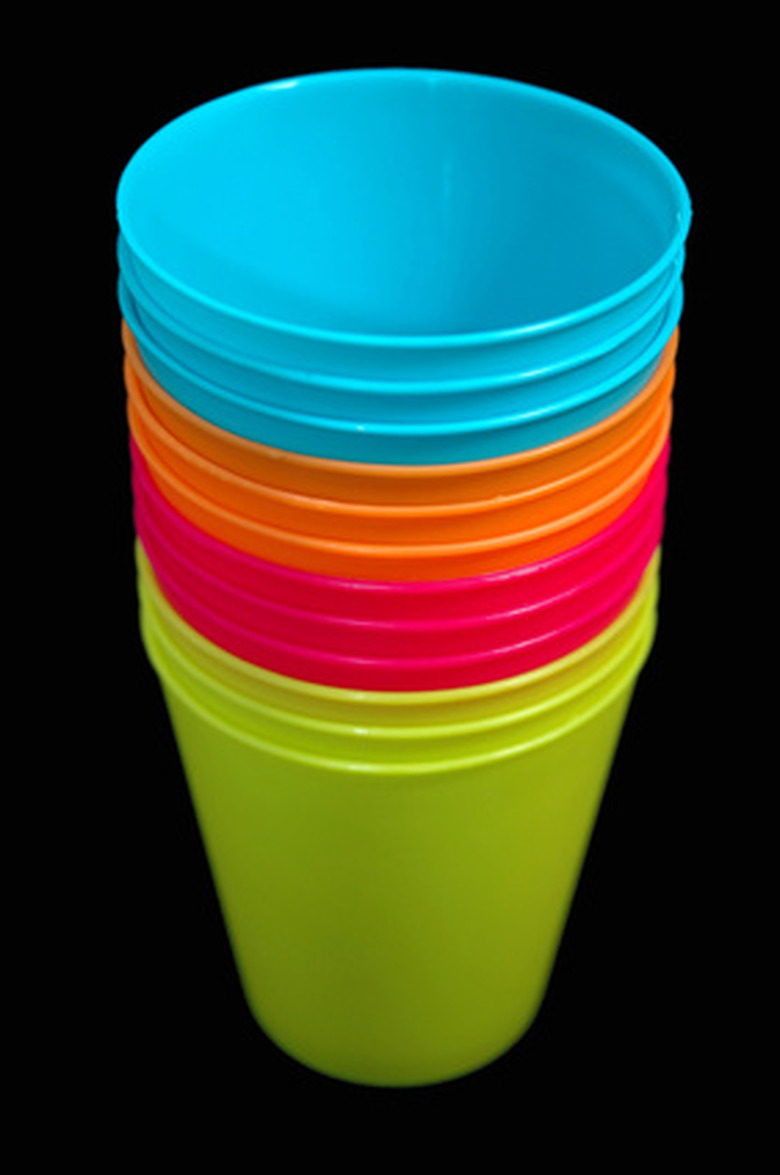How To Repair Cracks In A Plastic Container
Things Needed
-
Heat-resistant gloves
-
Safety glasses
-
De-greasing dish soap
-
Fine-grit sandpaper
-
Non-stick clothes iron
-
Metal skewer
-
Parchment paper
-
Heavy cardboard
Tip
Remove all grease and oils to avoid fires and ensure a proper adhesion. Wear protective eye wear.
Repairing cracks in plastic containers restores the usefulness of the item and keeps plastics out of landfills. Cracks occur in plastic containers due to extreme heat, cold, use and bending plastic past its breaking point. Repair cracked plastic by welding the edges; plastic welding is a method of fusing two pieces of plastic together with heat. Essentially, the heat melts the plastic, and when the surface cools, it becomes one piece again.
Step 1
Prepare a clean, level work surface. Work in a well-ventilated room to avoid exposure to toxic fumes from melted plastic. Wear heat-resistant gloves to avoid burns.
Step 2
Wash the plastic container with a de-greasing dish soap to remove oils, dirt and grease. Dry the container thoroughly.
Step 3
Rough the edges of the cracks and slightly round them off with a fine-grit sandpaper.
Step 4
Heat a non-stick clothes iron or a metal skewer over the flame on a stove. Place a piece of parchment paper over the cracks to keep the plastic from sticking to the bottom of the iron or metal skewer.
Step 5
Brace the inside of the container with a heavy piece of cardboard covered in parchment paper to provide a strong, supported work surface.
Step 6
Move the iron or hot metal skewer back and forth over the crack to melt the edges. Remove the parchment paper and the heat source as soon as the plastic begins to melt.
Step 7
Join the cracked edges together when the plastic becomes very soft and slightly runny. Hold the edges in place and wait for the plastic to cool. Plastic cools off rapidly so this only takes a matter of several seconds.
References
- "Working With Plastics"; Time Life Editors; 1982
